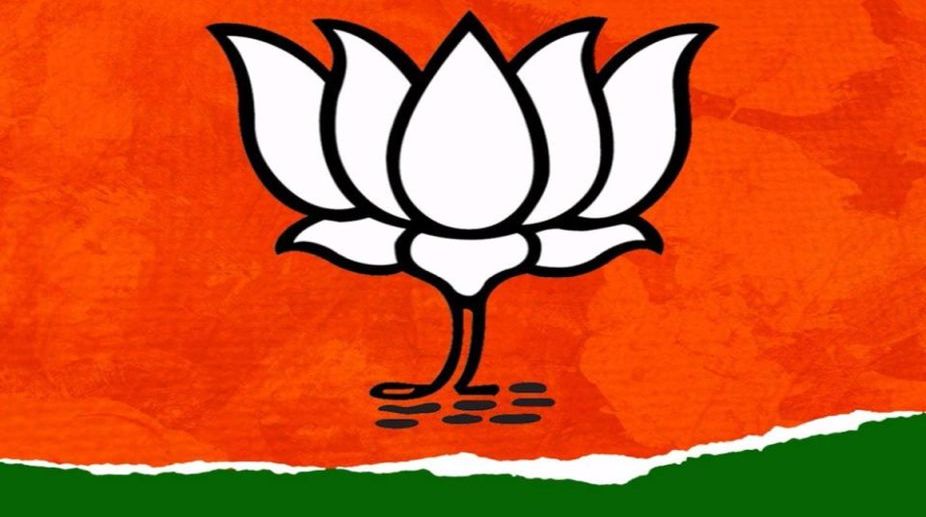‘Operation Tiger’ Draws Blood As More Uddhav Thackerey Men Defect
The Uddhav Thackeray-led Shiv Sena continues to bleed due to 'Operation Tiger' after Sindhudurg district Sena chief Sanjay Padte resigned from his post on Tuesday.

PHOTO: Facebook
The results of the Maharashtra civic polls send a clear message that the saffron space in the state and as a consequence in the country is increasing while the secular space is shrinking. It is good news for both the NDA allies – the BJP and the Shiv Sena – as their Hindutva model is gaining ground although the two parties had contested separately. Together, the BJP and the Sena have ensured a saffron sweep across the state.
Why should these civic body polls in one state create so much interest across the country? The Brihanmumbai Municipal Corporation (BMC), established in 1882 is the richest civic body in Asia. Its annual budget of Rs 37,052 crore (2016-17) is larger than of the three big metro cities of Delhi, Chennai and Kolkata. It is also more than that of some smaller states in the Northeast such as Tripura, Manipur, Mizoram, Nagaland and Sikkim. No wonder there is a fierce fight to capture it.
Advertisement
Along with the 10 cities, 25 zilla parishads and more than 280 panchayat samitis voted for their local representatives in two phases, on February 16 and February 21.
Advertisement
Broadly, the BMC results show that while the incumbent Sena has held its own, BJP has grown, and the opposition parties including the Congress and the NCP have continued to decline. The Maratha strongman and NCP chief Sharad Pawar lost his bastion in Pune. The Maharashtra Navnirman Sena of Raj Thackeray is almost wiped out.
While the BJP sought votes on the slogan of transparency, the Sena wooed them showing off its two decades of performance. The poll results show that the BJP has established itself as number one party across Maharashtra with a universal appeal. It has won with a simple majority in cities like Pune, Nashik and Nagpur and bagged eight out of the 10 municipalities proving that it is no longer dependent on Shiv Sena. It had overtaken the Sena in the 2014 Lok Sabha polls and the subsequent Assembly polls but its continuing rise in the state must be a red rag for the Sena, which considered itself as the big brother in Maharashtra. As a corollary, BJP chief minister Devendra Phadnavis has also emerged a clear winner and proved his leadership qualities.
Significantly the BJP’s rise is remarkable since 2014 when Prime Minister Modi took over. It has been consistently making forays into hitherto unchartered territories like the Northeast and Jammu and Kashmir or increasing its tally in places where it already has a presence. For instance recently it improved its performance in Odisha reducing the ruling BJD’s numbers considerably in the Panchayat polls. In Chandigarh, the party swept the city municipal election by winning 20 out of 26 seats.
In the Gujarat local body polls the BJP’s tally of 107 seats out of 123 reducing the Congress to 16 seats was impressive. The BJP has increased its seat share in the BMC by a whopping 250 per cent from 31 seats in 2012 to 82 seats now. The BJP is elated. The second thing which emerges is that the Sena has held its own, particulary in the BMC which is its bastion. Sena chief Uddhav Thackeray, who was dismissed as a light weight, has established that he is the true inheritor of his father Balasaheb Thackeray’s legacy. Not long ago, Uddhav was being written off as a political novice, fighting for space with his cousin Raj Thackeray but the latter has withered away. This was indeed his defining moment as Uddhaav took a big risk. After ruling the civic body for over two decades, he parted company with the BJP but the big gamble has yielded rewards. The Sena’s performance, especially in Mumbai and Thane, was critical to the party’s future. Uddhav had realised it was a “now or never” moment for him and his party. This win has confirmed the Sena’s continued relevance in the state. Uddhav has succeeded in transforming his party from a volatile right wing outfit to a more sober version, a process which has just started. However, whether Uddhav will decide to severe connection with the BJP altogether is doubtful, as they are partners at the Centre. After all, there are two more years to go before the 2019 polls.
The big losers are the Congress and its ally Nationalist Congress party. Both continue to be on the slide in a state which they had ruled for 15 years before they yielded power to the BJP-Sena combine in 2014. In the BMC, the Congress is down to 31 from 51, and the NCP to 9 from the 13 it had in 2012. Congress-NCP held power in three city corporations, Pune, Solapur and Amravati and the NCP held Pimpri-Chinchwad while Raj Thackeray’s Maharashtra Navnirman Sena had ruled Nasik for the last five years.
For the Congress since 2014, it has been a continuous slide except in Bihar in 2015 where its performance improved. The big blow in Maharashtra might have some adverse effect in the ongoing UP polls and bring down the morale of the party. The Congress has to do some serious thinking about its defeat.
Maharashtra, like many other states is facing factionalism and indiscipliine. The five leaders – Sanjay Nirupam, Gurudas Kamat, Priya Dutt, Milind Deora and Narayan Rane – have been fighting with each other and have already started the blame game. The results prove that the Congress party has failed to learn its lessons.
Advertisement